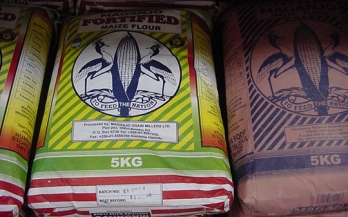Uganda is a low-income country in which 41% of the population lives below the poverty line, and where about 82% of the population cannot afford a healthy diet. There is a continued need to engage all actors and options to address the malnutrition burden the world faces.
Food fortification is implemented to increase intakes of specific nutrients in the diet, but contributions of fortified foods to nutrient intakes are rarely quantified.
Poor quality diets for young children after they stop exclusive breastfeeding is a major nutrition challenge in many countries. If the complementary foods provided to young children lack essential proteins, vitamins and minerals, it can hinder growth and development and make them vulnerable to illnesses.
The goal of this study was to develop and test two methods of quantitative dietary assessment that are less technically challenging and less expensive to implement than the standard 24HR dietary recall procedure, but still capable of identifying nutrient gaps with acceptable precision.
The goal of this study was to develop and test two methods of quantitative dietary assessment that are less technically challenging and less expensive to implement than the standard 24HR dietary recall procedure, but still capable of identifying nutrient gaps with acceptable precision.
The Uganda Food Consumption Survey was undertaken to provide the critical body of evidence that policy makers and program designers need to make informed decisions about effective investments to reduce deficiencies of vitamins and minerals in Uganda.
The purpose of the survey was to assess the household coverage and potential contribution of fortified foods to the micronutrient intake among women of reproductive age in Uganda.
This report presents the results of that assessment and proposes a Consumption Monitoring and Surveillance Framework consisting of the various processes, phases, components, and domains that provide an enabling environment for this to happen.
The 2015 Uganda Fortification Assessment Coverage Toolkit (FACT) survey is a cross-sectional survey that is nationally representative and representative of urban and rural areas. The purpose of the survey was to assess the coverage and potential contribution of fortified foods to the micronutrient intake of the population.
Household coverage with iodized salt was assessed in 10 countries that implemented Universal Salt Iodization.










